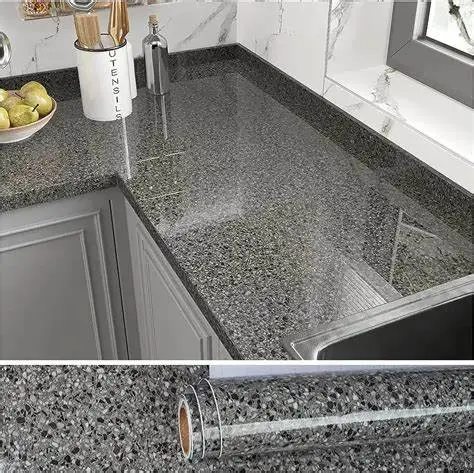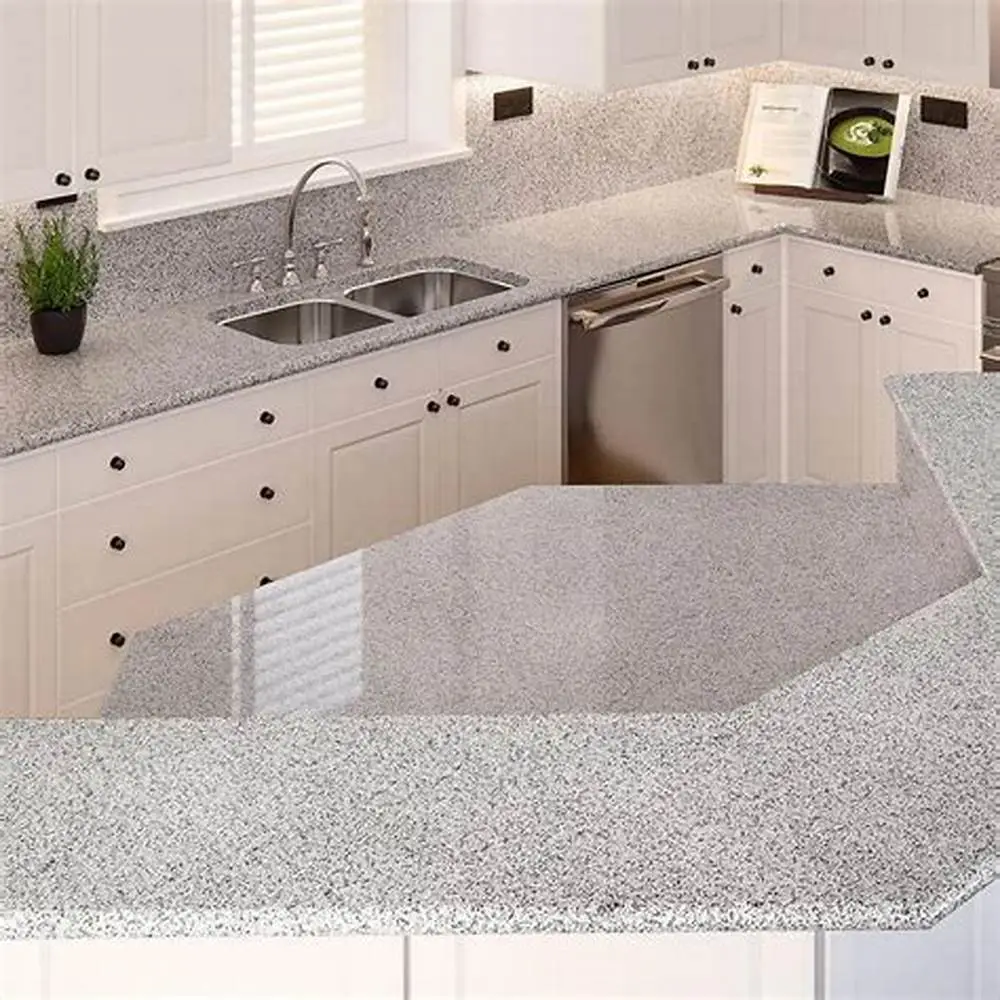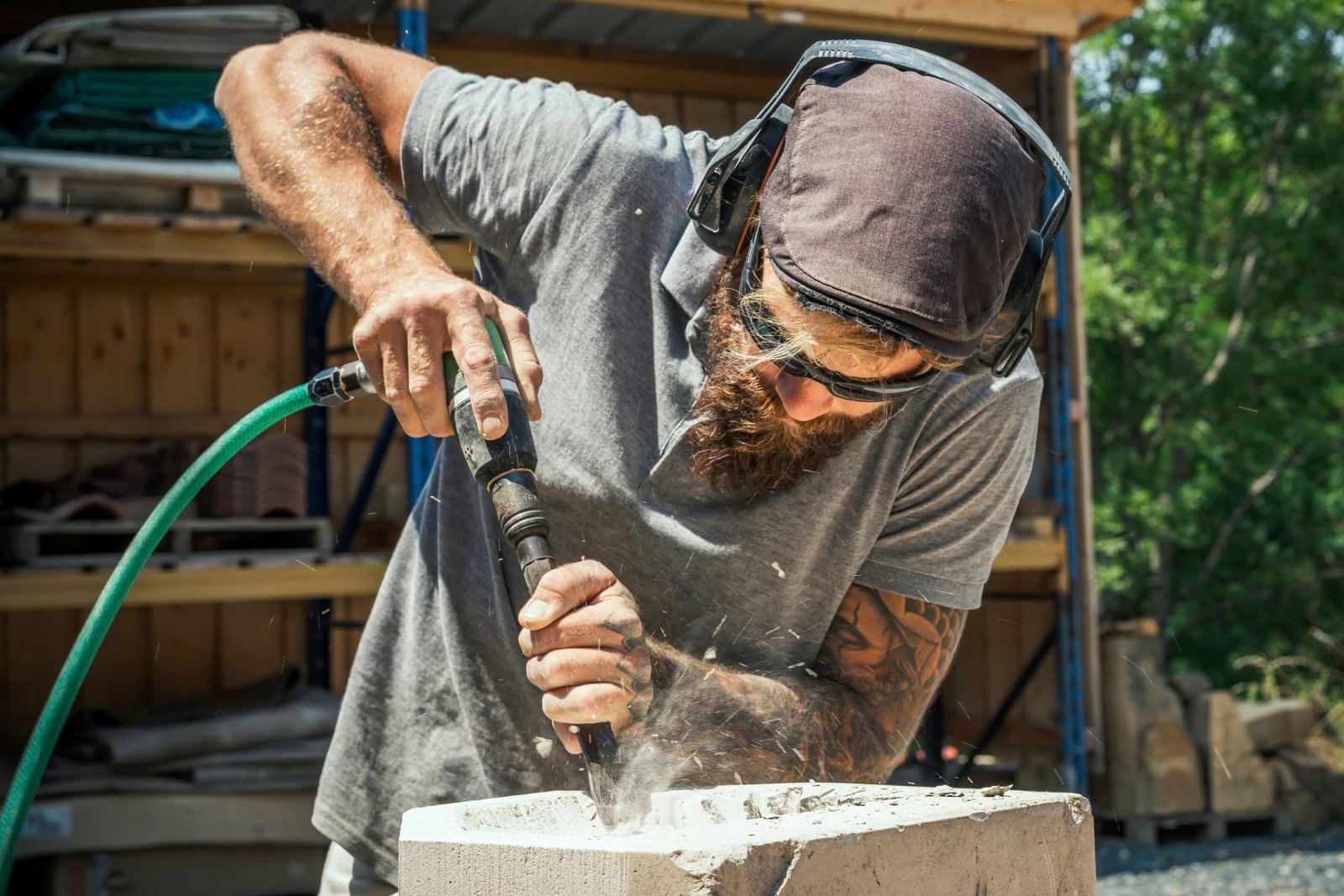
Installing granite countertops are a major upgrade for any kitchen or bathroom. With its natural durability, unique color patterns, and long-term value
Installing granite countertops are a major upgrade for any kitchen or bathroom. With its natural durability, unique color patterns, and long-term value, granite remains a top-tier choice for homeowners and designers alike. But one often-overlooked factor in a successful countertop installation is the adhesive or glue used to bond the granite slab to cabinets or to join seams. Choosing the wrong product can lead to cracking, loosening, or water penetration—all of which can compromise your investment.
In this guide, we’ll break down exactly what adhesive or glue to use for granite countertops, explain why it matters, and walk through best practices for application.

What Is a Granite Countertop?
A granite countertop is a solid, natural stone slab that’s cut and polished for use in kitchens, bathrooms, and other surface areas. Due to its weight and rigidity, granite requires special considerations when securing it to cabinetry or when bonding multiple pieces together.
👉 What Is a Granite Countertop?

Why the Right Adhesive Matters
Granite isn’t just heavy—it’s also brittle at stress points like sink cutouts and corners. Using improper adhesive can result in:
- Separation from the base cabinets
- Uneven settling over time
- Visible seams or cracking
- Costly granite countertop repair
When you invest in premium granite countertop colors and designs, the last thing you want is structural failure from poor bonding.
Types of Adhesive Used for Granite Countertops
There isn’t a one-size-fits-all adhesive. The best glue depends on the part of the installation you’re working on: base cabinet bonding, seam joining, or edge adhesion.
1. Silicone Adhesive (for Cabinet Mounting)
- Use: Attaching granite to cabinet tops
- Features: Flexible, moisture-resistant, and easy to apply
- Recommended Brands: GE Silicone II, Loctite Premium Construction Adhesive
Silicone is ideal for laying granite slabs onto wood cabinetry. It provides just enough grip without being overly rigid, allowing for slight expansion/contraction due to temperature.
👉 How to Transport Granite Countertops Without Breaking?
2. Epoxy Resin (for Seams and Joints)
- Use: Filling and joining two slabs at seams
- Features: Super strong, hardens permanently, color-tinted for invisibility
- Recommended Brands: Tenax, Akemi, Superior Stone Products
Epoxy is used where you need high-strength, permanent adhesion—like joining granite slabs for L-shaped counters or long runs. Professional installers color-match epoxy to the stone for an invisible seam.
3. Polyester Resin (for Edge Assembly)
- Use: Attaching laminated granite edges
- Features: Fast cure time, polishable finish
- Recommended Uses: Primarily used in fabrication shops for edge buildup
While polyester resin is less commonly used during home installation, it’s often used during the fabrication process to glue together the edges that increase slab thickness.
How to Choose the Right Granite Countertop Adhesive
| Application | Best Adhesive Type | Why |
|---|---|---|
| Attaching to cabinets | Silicone or construction adhesive | Flexible, strong bond, easy to remove |
| Joining seams | Color-matched epoxy | Strong, permanent, seamless |
| Edge build-up | Polyester resin | Fast-drying, compatible with polishing |
| Backsplash attachment | Silicone | Moisture-resistant and easy to apply |
How to Apply Adhesive for Granite Countertop Installation
Step 1: Prep the Surface
- Clean the underside of the granite and cabinet surface.
- Remove all dust, grease, or moisture.
- Make sure the cabinets are level and stable.
Step 2: Apply Adhesive
- For cabinets: Apply dime-sized dabs of silicone every 6–12 inches along the cabinet top.
- For seams: Mix epoxy according to package instructions and tint if needed.
- For edges: Apply resin carefully and clamp pieces until dry.
👉 How to Install Hidden Brackets for Granite Countertops?
Step 3: Secure the Granite
- Carefully place the granite slab onto the adhesive.
- Press down evenly and check for level.
- Allow 24 hours for full cure time before applying weight.
Granite Countertop Adhesive Tips
- Always test your adhesive on a small area first, especially if it’s visible.
- Match the adhesive color to the granite for seam invisibility.
- Use spacers or shims to prevent shifting during the curing process.
- Never use hot glue, wood glue, or general-purpose adhesives not rated for stone.
What Not to Use
Avoid the following adhesive types:
- Liquid nails (too rigid and can crack stone)
- Standard carpenter’s glue
- Caulks not rated for granite
- Hot glue or super glue (inconsistent bond and not long-lasting)
Common Mistakes to Avoid
- Applying adhesive to dirty or wet surfaces
- Not allowing proper cure time before installing appliances or sinks
- Using the wrong epoxy or failing to tint the seam color properly
- Not accounting for expansion gaps near walls
How Adhesive Affects Granite Countertop Maintenance
Using the right adhesive helps:
- Prevent seam gaps over time
- Avoid moisture damage under the countertop
- Minimize the need for granite countertop repair
- Preserve alignment and support for hidden brackets and overhangs
Proper bonding ensures better granite countertop cleaning and long-term performance.
Final Thoughts
Knowing what adhesive or glue to use for granite countertops can mean the difference between a flawless installation and an expensive headache. Always choose the right adhesive for the right job—whether you’re bonding the slab to cabinets, joining seams, or laminating edges.
By following proper adhesive techniques, you’ll preserve your granite countertop’s strength, design, and investment for years to come.

